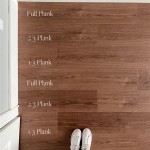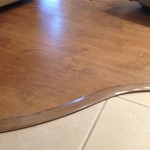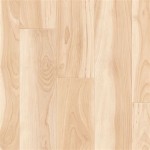Hardwood flooring is a classic and timeless choice for homeowners. It adds beauty and value to your home and can last for decades if properly maintained. But before installing hardwood flooring, it’s important to consider the importance of underlayment and what it can do for your hardwood floor installation.
What is Underlayment?
Underlayment is a thin layer of material (often foam, felt, or rubber) that is placed between the subfloor and the hardwood flooring. It provides cushioning and insulation, as well as helping to reduce sound transmission between floors. Depending on the type of underlayment you choose, it can also help protect the flooring from moisture damage.
Types of Underlayment
There are several different types of underlayment available for hardwood floors, each with its own benefits and drawbacks. Foam underlayment is one of the most common options and provides the most cushioning and insulation. Rubber underlayment is a great choice for moisture protection and sound reduction, while felt underlayment is the most cost-effective option.
Installing Underlayment
Before installing the underlayment, it’s important to make sure the subfloor is clean and level. Any bumps or dips in the subfloor can cause the hardwood floor to shift or buckle over time. The underlayment should be rolled out in the same direction as the planned hardwood flooring, with the seams taped together to create a continuous layer. Once the underlayment is in place, the hardwood flooring can be installed according to the manufacturer’s instructions.
Benefits of Underlayment
Underlayment offers several benefits that can help ensure a successful hardwood floor installation. It provides cushioning and insulation, reducing sound transmission between floors. It also helps protect the flooring from moisture damage, making it less likely to warp or buckle over time. In addition, underlayment can help reduce the amount of dust and debris that can accumulate beneath the flooring.
Considerations
When choosing an underlayment, it’s important to consider the type of hardwood flooring you plan to install. Some types of hardwood flooring require a specific type of underlayment, so it’s important to consult with a professional or follow the manufacturer’s instructions. It’s also important to make sure the underlayment is appropriate for the subfloor and the environment, as some underlayment can be susceptible to moisture damage.
Conclusion
Underlayment is an important part of any hardwood flooring installation. It provides cushioning, insulation, and moisture protection, as well as helping to reduce sound transmission between floors. When choosing an underlayment, it’s important to consider the type of hardwood flooring you plan to install and the environmental conditions in the room. With the right underlayment, your hardwood floor installation can look beautiful and last for many years.
/laying-laminate-flooring-5c36643946e0fb0001102b5b.jpg)






/new-floor-installation-185270632-582b722c3df78c6f6af0a8ab.jpg)

/PlywoodUnderlaymentUnderWoodFlooring-5ac24fbcae9ab8003781af25.jpg)
:max_bytes(150000):strip_icc()/hardwood--oak--floor-172261142-5a382e14ec2f640037fe9f90.jpg)




Related Posts








